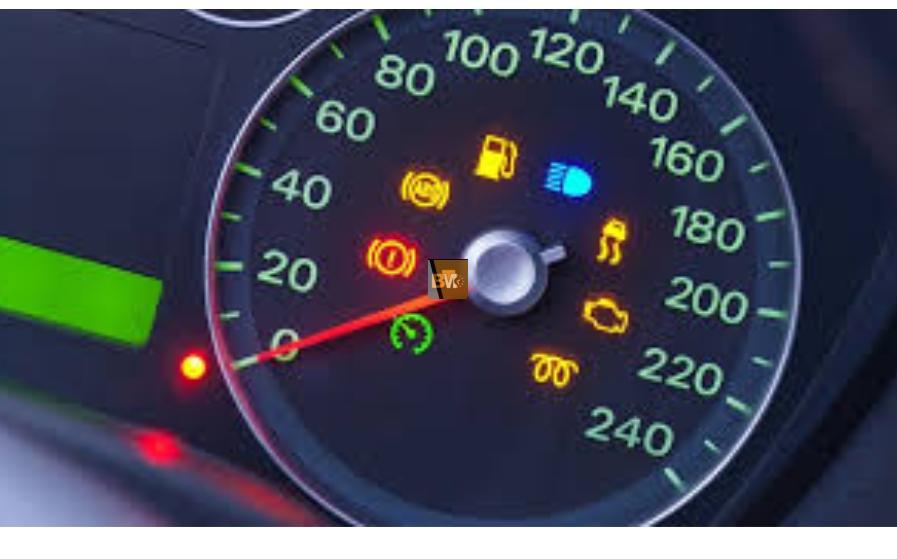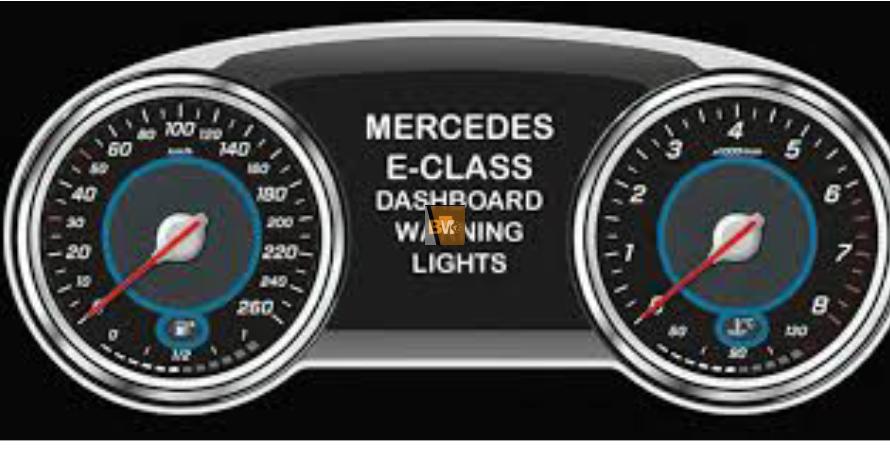Warning lights on a Mercedes are more than just symbols on your dashboard, they’re your car’s way of communicating with you. Understanding these lights is vital for maintaining your vehicle’s health and ensuring your safety on the road. Ignoring them can lead to costly repairs and even put you in danger. This guide will help you recognize these signals and take the right actions, keeping your Mercedes running smoothly and safely.
Why Do Mercedes Warning Lights Matter?
Mercedes warning lights matter because they are your first line of defense against potential car problems. These lights are designed to alert you to issues before they become serious, helping you avoid breakdowns and expensive repairs. By paying attention to these signals, you can ensure that your car stays in top condition and that you’re driving safely. Understanding the importance of these warning lights can save you time, money, and stress in the long run.

Common Mercedes Warning Lights & Their Meanings
Understanding the warning lights on your Mercedes is crucial for maintaining the health and safety of your vehicle. These lights act as early alerts, signaling when something needs attention to prevent more serious issues.
- Check Engine Light
The Check Engine Light indicates a problem with your engine or its components. It could be something minor like a loose gas cap or a more significant issue like an engine malfunction. It’s important to have this checked as soon as possible to avoid further damage and ultimately a need for Mercedes Engine Repair.
- Battery Charge Warning Light
This light signals that your car’s battery isn’t charging properly. The issue could stem from a failing alternator, battery, or faulty electrical connections. If this light comes on while driving, it’s important to address it immediately before the battery drains completely.
- Oil Pressure Warning Light
The Oil Pressure Warning Light alerts you when your oil pressure is low. Driving with low oil pressure can severely damage your engine, so it’s essential to stop and check your oil levels right away. If the problem persists, consult a professional.
- Brake System Warning Light
This light indicates an issue with your braking system, such as low brake fluid or worn-out brake pads. Since this directly affects your vehicle’s safety, it’s crucial to address it immediately to ensure effective braking.
- Tire Pressure Monitoring System (TPMS) Light
The TPMS light warns you when one or more of your tires are underinflated. Proper tire pressure is vital for safe handling and optimal fuel efficiency, so check your tire pressure as soon as this light appears.
- ABS Warning Light
The ABS (Anti-lock Braking System) warning light comes on when there’s an issue with the ABS system. While you can still brake, the system won’t help prevent skidding, so it’s important to have it checked to ensure safe braking in emergency situations.
Recognizing and understanding these warning lights helps you maintain your vehicle’s performance and safety. Addressing these alerts promptly can prevent further damage and keep your Mercedes running smoothly.

Critical Warning Lights You Should Never Ignore
In addition to the commonly recognized warning lights, there are a few critical signals on your Mercedes dashboard that demand immediate attention due to their severity.
- Transmission Warning Light
The transmission warning light, usually shown as a gear symbol, indicates a problem with the transmission system. This could mean low fluid levels or more serious mechanical issues. Ignoring it can lead to severe transmission damage, so have it inspected immediately.
- Power Steering Warning Light
This light, depicted as a steering wheel icon, alerts you to issues with the power steering system. If it fails, steering becomes difficult and dangerous. Get it checked right away to maintain safe control of your vehicle.
- Engine Oil Level Warning Light
This light signals that your engine oil level is too low or too high, both of which can harm your engine. Address this warning quickly to avoid engine damage from improper lubrication or pressure.
- Electronic Stability Program (ESP) Warning Light
The ESP warning light indicates a malfunction in your car’s stability control system. Without it, your vehicle is at a higher risk of skidding, especially on slippery roads. Immediate inspection is necessary to ensure safe driving.
- Glow Plug Warning Light (Diesel Models)
For diesel engines, this light indicates an issue with the glow plugs, essential for starting the engine in cold conditions. If it stays on or flashes, have it checked promptly from the Mercedes Service Center Dubai to avoid starting problems or reduced engine performance.
Responding quickly to these critical warning lights is vital to avoid major car repairs and ensure your vehicle remains safe to drive.
What to Do When a Warning Light Appears
When a warning light shows up on your Mercedes dashboard, it’s essential to respond appropriately to avoid further issues.
- Identify the Light
- Start by identifying which warning light is on. Your vehicle’s manual can help you understand what each light means. This is important to determine the nature of the problem.
- Assess the Urgency
- Determine how serious the issue is. Red or flashing lights usually indicate urgent problems that require immediate action, like engine or brake issues. Yellow or orange lights often suggest a less critical issue but still need attention soon.
- Take Immediate Action if Necessary
- For severe warnings, such as those related to the engine temperature or brakes, pull over safely and turn off the engine. This helps prevent further damage and ensures your safety.
- Check Fluid Levels
- If the warning light relates to your vehicle’s fluids—such as oil, coolant, or brake fluid, check the levels. Topping them up might resolve the issue temporarily, allowing you to drive to a service center.
- Get Professional Help
- If the light remains on after taking initial steps, or if you’re unsure what the problem is, seek professional help. A certified Mercedes mechanic can diagnose the issue and perform the necessary repairs to keep your car running smoothly.
By following these steps, you can address warning lights quickly and effectively, keeping your vehicle in good condition and ensuring your safety on the road.
Understanding the Colors of Mercedes Warning Lights
Mercedes warning lights come in different colors, each indicating how urgent the issue is.
- Red Warning Lights
Red lights are the most serious. They signal critical issues like engine overheating, brake problems, or low oil pressure. If a red light comes on, stop driving as soon as it’s safe and address the issue immediately.
- Yellow/Orange Warning Lights
Yellow or orange lights mean there’s a problem that needs attention, but it’s not as urgent. For example, a check engine or tire pressure light might appear in these colors. You can keep driving, but it’s important to get the issue checked out soon.
- Green and Blue Warning Lights
Green and blue lights are generally informational. They tell you things like your headlights or high beams are on. These lights don’t signal any problems and don’t require immediate action.
By knowing what these colors mean, you can respond appropriately to warning lights and keep your car running smoothly and safely.

Preventive Maintenance to Avoid Warning Lights
Preventive maintenance is essential to keep your Mercedes running smoothly and reduce the chances of warning lights appearing. Here are some key steps:
- Regular Oil Changes
- Change your oil according to the manufacturer’s schedule to keep the engine lubricated and prevent the oil pressure light from coming on.
- Check Fluid Levels
- Regularly check and top up vital fluids like coolant, brake fluid, transmission fluid, and power steering fluid. Low levels can trigger warning lights and lead to bigger problems.
- Monitor Tire Pressure
- Check tire pressure monthly. Properly inflated tires improve safety and fuel efficiency while preventing the tire pressure light from activating.
- Inspect Brakes Regularly
- Have your brakes inspected during routine service visits. This includes checking the brake pads, rotors, and fluid to avoid brake system warnings.
- Test the Battery
- Ensure your battery is in good condition by having it tested regularly, especially before winter. A healthy battery prevents the battery charge light from appearing.
- Engine Diagnostics
- Run periodic engine diagnostics to catch minor issues before they trigger the check engine light. Early detection can prevent costly repairs.
- Replace Worn Belts and Hoses
- Inspect belts and hoses for wear and replace them as needed. Worn belts can lead to overheating and trigger warning lights.
- Keep Sensors Clean
- Dirty or faulty sensors can cause warning lights to come on. Ensure that sensors are clean and functioning properly during regular maintenance.
By following these preventive measures, you can minimize the chances of warning lights appearing, ensuring your Mercedes remains reliable and safe to drive.
When to Contact a Professional?
It’s important to know when to seek professional help for your Mercedes to avoid serious problems:
- Persistent or Flashing Warning Lights: If a warning light doesn’t go off after basic checks or if it’s flashing, it’s time to consult a mechanic.
- Unusual Noises or Vibrations: Strange sounds or vibrations can indicate deeper mechanical issues that need expert attention.
- Frequent Stalling or Power Loss: Regular stalling or loss of power could mean engine trouble or electrical issues, requiring a professional diagnosis.
- Fluid Leaks or Overheating: Any fluid leaks or signs of overheating should be checked by a professional immediately to prevent severe damage.
- Brake or Transmission Issues: Reduced braking power or transmission problems need urgent professional inspection to ensure your safety.
For any of these issues, it’s best to visit a trusted garage like Mercedes Service Center Dubai. Our experienced technicians can diagnose and fix problems quickly, keeping your Mercedes in top condition. Don’t wait—contact us today for expert service you can rely on!
Understanding Mercedes warning lights is crucial for safe driving. These lights are your car’s way of telling you something needs attention. Ignoring them can lead to serious issues and costly repairs. To keep your Mercedes running smoothly, take immediate action when a warning light appears and schedule regular vehicle check-ups. Staying proactive ensures your car’s longevity and your safety on the road. Make sure to prioritize these signals and maintain your vehicle with the care it deserves.







Leave a Reply